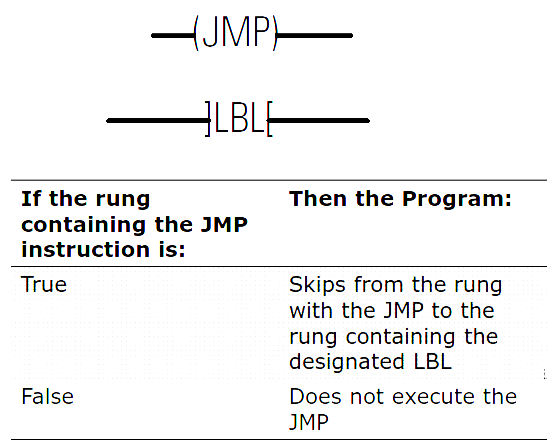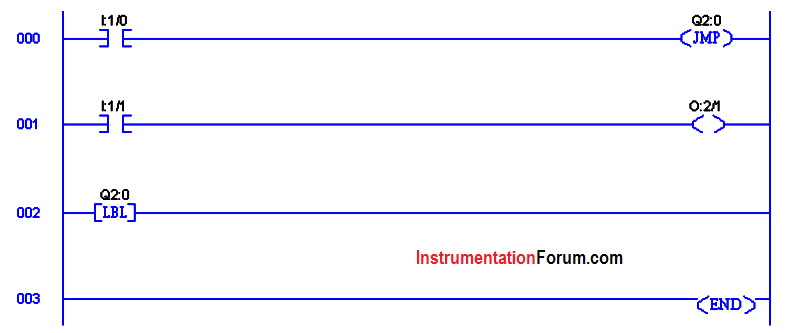The Jump (JMP) and Label (LBL) instructions are used in pairs to skip portions of the ladder program.
Jumping forward to a label saves program scan time by omitting a program segment until needed.
Jumping backward lets the controller execute program segments repeatedly.

Labels have the format Q:NNN. NNN is a numeric value from 000-255.
Jumping forward to a label saves program scan time by omitting a program segment until needed.
Jumping backward lets the controller execute program segments repeatedly
– Be careful not to jump backwards an excessive number of times
– The watchdog timer could time out and fault the controller
– Use a counter, timer, or the “program scan” register (system status register, word S:3, bits 0 to 7) to limit the amount of time you spend looping inside of JMP/LBL instructions.
JMP and LBL Example in Ladder Logic
Selectively jump over rung 1 if I:1/0 is energized.
In this example, O:2/1 would retain its last evaluated state if rung 1 is skipped.
Use extreme caution in programming.
Using JMP
The JMP instruction causes the controller to skip rungs. You can jump to the same label from one or more JMP instruction.
Using LBL
This input instruction is the target of JMP instructions having the same label number.
You must program this instruction as the first instruction of a rung. This instruction has no control bits.
You can program multiple jumps to the same label by assigning the same label number to multiple JMP instructions. However, label numbers must be unique.
Note Do not jump (JMP) into an MCR zone. Instructions that are programmed within the MCR zone starting at the LBL instruction and ending at the ‘END MCR’ instruction are always evaluated as though the MCR zone is true, regardless of the true state of the “Start MCR” instruction.
